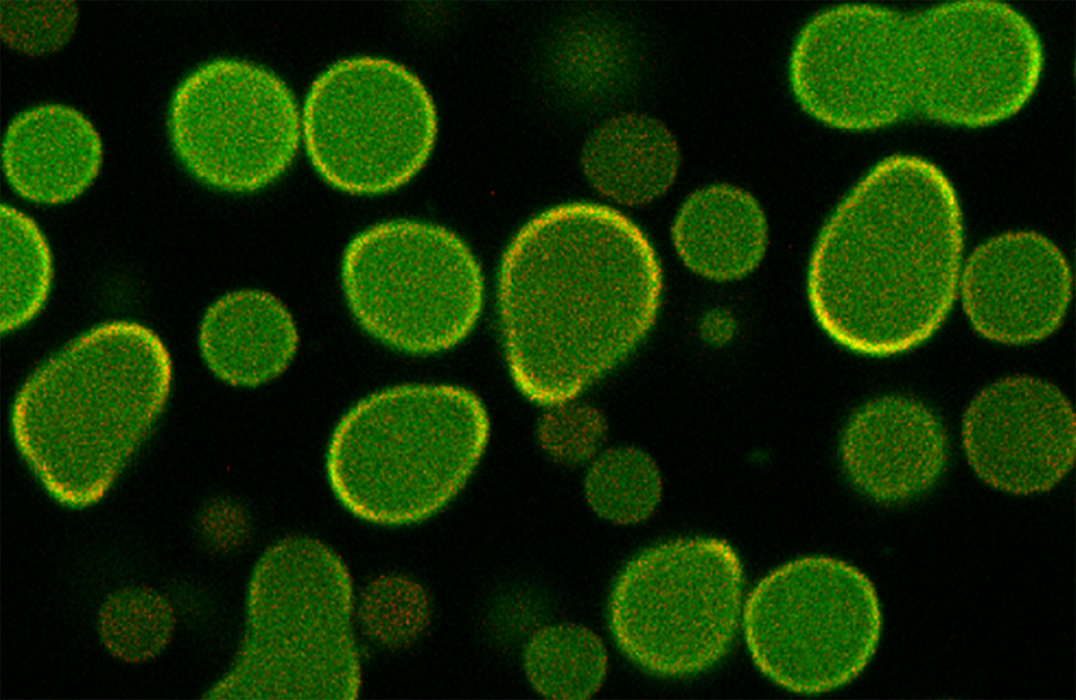News & Press
The Answer in Micro-droplets
Researchers imitate signaling processes using DNA building blocks in protocells

The protocells fuse after the artificial metalloenzyme has triggered a signalling cascade. Source: Avik Samanta
Thanks to complex signaling processes, the human body is able to react to its environment: When a stimulus hits a cell, it converts it into a signal that is transmitted to the cell's interior with the help of chemical reaction networks and causes a reaction there. Prof. Andreas Walther from the Cluster of Excellence “Living, Adaptive and Energy-autonomous Materials Systems (livMatS)” and Dr. Avik Samanta from the Institute for Macromolecular Chemistry at the University of Freiburg, together with Prof. Thomas Ward and Dr. Valerio Sabatino from the University of Basel in Switzerland, have succeeded in reproducing such signaling processes in protocells composed of DNA. The study offers conclusions on how adaptive artificial systems with life-like functions can be developed. The researchers have published their results in the scientific journal Nature Nanotechnology.
Protocells are believed to play a key role in the origin of all life: In the primordial cells, chemical reactions could take place in highly concentrated mixtures of molecules. These reactions laid the foundation for the development of living organisms. Scientists reproduce such protocells with micro-droplets, so-called coacervates, which also have a high density of molecules and thus provide a similar environment for chemical reactions.
The team equipped the inside of such a synthetic protocell with DNA and bound artificial catalysts, so-called metalloenzymes, to the individual DNA strands. For this purpose, the researchers anchored biotin on individual DNA strands. With the help of the protein streptadivin, which binds particularly well to biotin, the scientists were able to dock an artificial metalloenzyme to the DNA. Ward and Sabatino had previously optimized the streptavidin in such a way that the attached catalyst is particularly reactive.
The artificial metalloenzyme then triggers a signaling cascade in the protocell: The catalyst converts a signal molecule into a fluorescent effector molecule. Since this fluorescent effector molecule lights up in the reaction, its path becomes visible under the microscope. As an intermediate product of the reaction, it interacts with the DNA strands that hold the capsule wall of the protocell together. As a result, the cell grows, undergoes mechanical stress, and similar to living organisms, the protocells fuse.
“The replication of such seemingly simple metabolic adaptation processes in protocells is of paramount importance in order to draw conclusions about the origin of life,” says Walther. “With this study, a versatile toolbox is now available to further investigate this process.”
Original publication:
A. Samanta, V. Sabatino, T.R. Ward, A. Walther: Functional and morphological adaptation in DNA protocells via signal processing prompted by artificial metalloenzymes. In: Nature Nanotechnology (2020), DOI: 10.1038/s41565-020-0761-y
